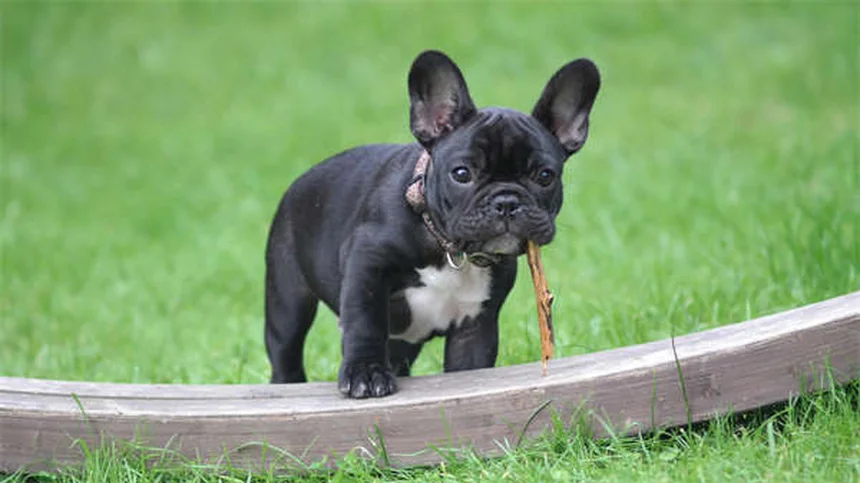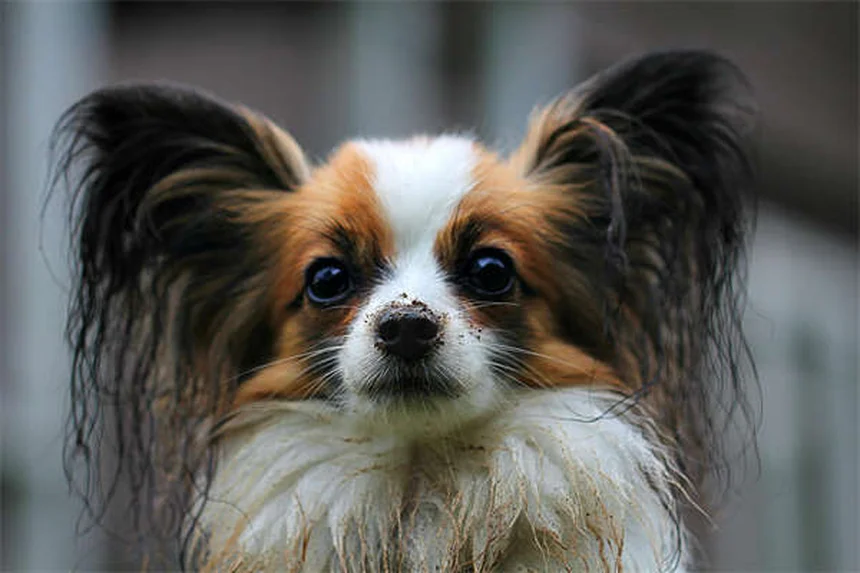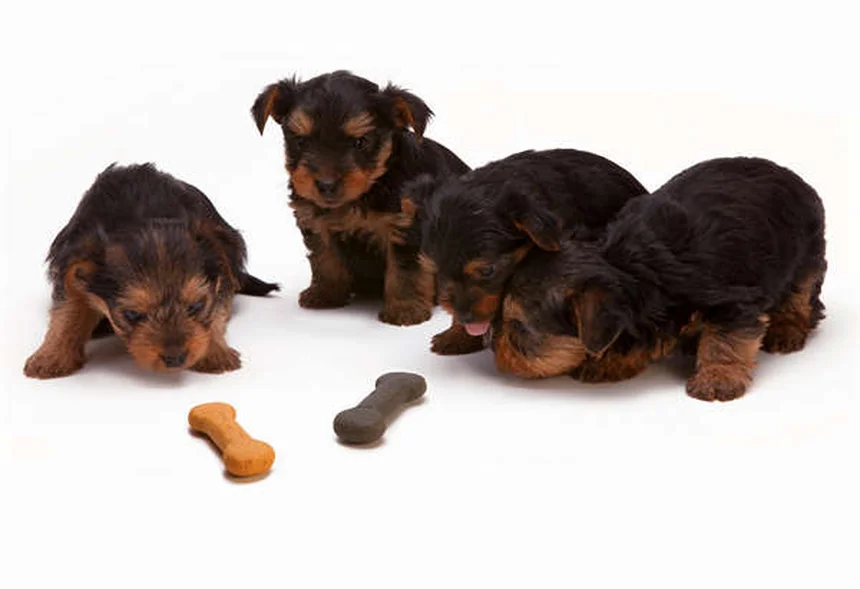Advertisement
When do puppies stop teething? The answer is: Most puppies complete their teething process by 6 months old! Just like human babies, puppies go through this uncomfortable phase where their 28 baby teeth fall out and 42 adult teeth come in. I've raised over a dozen puppies in my years as a dog trainer, and let me tell you - understanding this timeline is crucial for every pet parent.Between 3-7 months, your fur baby will be extra mouthy (yes, those sharp little teeth hurt!). But don't worry - we'll walk you through exactly what to expect each month, how to spot teething symptoms, and most importantly, how to survive this phase with your furniture intact. By the end, you'll be a teething expert ready to help your pup through this important developmental stage!
E.g. :When to Switch from Puppy to Adult Dog Food: Expert Guide
- 1、Puppy Teething 101: A Survival Guide for Pet Parents
- 2、Puppy Teething Hacks That Actually Work
- 3、When Teething Becomes a Problem
- 4、Pro Tips From Experienced Dog Owners
- 5、Fun Facts About Puppy Teeth
- 6、Your Teething Puppy FAQ
- 7、Beyond the Basics: Advanced Puppy Teething Insights
- 8、Creating a Teething-Friendly Environment
- 9、Nutritional Support for Teething Puppies
- 10、Behavioral Connections to Teething
- 11、Long-Term Dental Health Starts Now
- 12、Teething as a Bonding Opportunity
- 13、FAQs
Puppy Teething 101: A Survival Guide for Pet Parents
Why Puppies Chew Everything in Sight
Ever wondered why your new puppy treats your favorite shoes like chew toys? Welcome to the teething phase! Just like human babies, puppies go through this uncomfortable process where their baby teeth fall out and adult teeth come in. The difference? Puppies do it three times faster than human kids!
Between 3-7 months old, your fur baby will be extra mouthy. They're not being naughty - their gums are literally aching as 42 adult teeth push through. Imagine having 28 tiny knives in your mouth getting replaced by bigger knives! No wonder they chew everything.
The Puppy Tooth Timeline
Let me break down what's happening in that adorable mouth:
| Age | Tooth Development | What You'll Notice |
|---|---|---|
| 0-3 weeks | No teeth (just milk drinking) | Gummy smiles |
| 3-8 weeks | 28 baby teeth erupt | First nibbles on solid food |
| 3.5-6 months | Adult teeth replace baby teeth | Chewing EVERYTHING |
 Photos provided by pixabay
Photos provided by pixabay
Spotting Teething Symptoms
How can you tell if your pup is teething versus just being a normal, destructive puppy? Look for these telltale signs:
- Excessive drooling (like they've just seen steak)
- Chewing with extreme enthusiasm
- Finding tiny teeth around the house (or not - many get swallowed)
- Mild gum bleeding (don't panic - this is normal)
Did you know some puppies get "teething diarrhea"? The stress of new teeth coming in can upset their tummies. If it lasts more than a day though, call your vet.
Puppy Teething Hacks That Actually Work
Cold Therapy for Sore Gums
Here's a pro tip: freeze their toys! The cold helps numb those sore gums. Try these freezer-friendly options:
1. Wet a washcloth, twist it, and freeze
2. Fill a Kong with peanut butter and freeze
3. Offer frozen carrot sticks (nature's chew toys)
4. Try special teething rings made for puppies
Why does cold work so well? Think of it like putting ice on a sprained ankle - it reduces swelling and dulls the pain signals. Your puppy will thank you!
Chew Toy Essentials
Not all chew toys are created equal. You want something that's:
- Soft enough not to damage new teeth
- Tough enough to satisfy the chewing urge
- Interesting enough to beat out your furniture legs
My top pick? The Kong Puppy Toy. It's rubbery, bouncy, and you can stuff it with treats. Puppy crack, basically.
When Teething Becomes a Problem
 Photos provided by pixabay
Photos provided by pixabay
Spotting Teething Symptoms
Most teething issues resolve on their own, but how do you know when to call the vet? Watch for these red flags:
- Refusing to eat for more than a day
- Excessive bleeding from gums
- Broken baby teeth stuck in gums
- Adult teeth coming in crooked
Did you know some small breed dogs are prone to "retained baby teeth"? This means the baby teeth don't fall out when they should, causing dental problems later. Your vet may need to remove them.
The Great Toy Safety Check
Not all chew toys are safe for teething pups. Avoid:
1. Hard bones or antlers (can fracture new teeth)
2. Toys with small parts they could swallow
3. Rawhide (can cause choking or blockages)
4. Sticks (splinters are no joke)
Here's a simple test: if you can't make an indent with your thumbnail, it's probably too hard for those developing teeth.
Pro Tips From Experienced Dog Owners
Surviving the Landshark Phase
Puppy teeth are sharp! Here's how to keep your hands (and sanity) intact:
- Always have an approved chew toy within reach
- Redirect biting to toys immediately
- Use bitter apple spray on forbidden items
- Frozen washcloths make great cheap teethers
Remember that time I thought my puppy had swallowed a sock? Turns out it was just teething drool. So. Much. Drool.
 Photos provided by pixabay
Photos provided by pixabay
Spotting Teething Symptoms
This is the perfect time to teach "leave it" and "drop it" commands. Why? Because they're extra motivated by treats right now! Use small, soft training treats that won't hurt their sore mouths.
Progression looks like:
1. Offer toy, say "take it"
2. Show treat, say "drop it"
3. When they release, reward and give toy back
4. Repeat until they're experts
Fun Facts About Puppy Teeth
The Tooth Fairy Visits Dogs Too
Ever find a tiny puppy tooth? Some owners collect them like baby teeth! Here's what's happening in there:
- Puppies have 28 baby teeth
- Adults have 42 permanent teeth
- The roots of baby teeth dissolve as adult teeth push up
- Some breeds (like Chihuahuas) often need dental help
Did you know wolves have the same teething process? Our domestic dogs just do it with more couch casualties.
Why Do Puppies Have Such Sharp Teeth?
Those needle-like baby teeth serve important purposes:
1. Helps transition from milk to solid food
2. Teaches bite inhibition through play
3. Prepares jaw muscles for adult teeth
4. Helps explore their world (everything goes in the mouth!)
Isn't it amazing how nature designed this process? Even if it does turn your puppy into a tiny alligator for a few months.
Your Teething Puppy FAQ
How Long Does This Last?
The active teething phase typically runs from 3 to 6 months, but some puppies finish earlier or later. Smaller breeds often take longer. The good news? Once those adult teeth are in, the destructive chewing usually decreases dramatically.
But wait - doesn't chewing continue into adulthood? Absolutely! Dogs chew throughout their lives, but after teething it's more about enjoyment than pain relief. That's why it's crucial to establish good chewing habits now.
What If My Puppy Won't Chew Toys?
Some puppies need extra encouragement. Try these tricks:
- Rub a tiny bit of peanut butter on the toy
- Make it a game by moving the toy enticingly
- Try different textures (rubber, rope, soft plush)
- Chew on it yourself (yes, really - puppies learn by mimicking)
Remember that phase when my dog only wanted to chew my $200 headphones? We got through it with frozen carrots and patience. You will too!
Beyond the Basics: Advanced Puppy Teething Insights
The Hidden Benefits of Teething
While we often focus on the challenges, teething actually serves several crucial developmental purposes. Did you know that this chewing phase helps shape your puppy's jaw structure? The constant pressure from chewing stimulates proper bone growth and alignment.
Here's something fascinating - teething puppies develop their bite strength during this period. The transition from baby teeth to adult teeth allows their jaw muscles to gradually strengthen. Think of it like weight training for their mouth! This natural process prepares them for a lifetime of healthy chewing and eating.
Breed-Specific Teething Considerations
Not all puppies experience teething the same way. Smaller breeds like Yorkies and Chihuahuas often have more dental issues because their tiny mouths are more crowded. I've seen cases where baby teeth don't fall out properly, requiring veterinary intervention.
Larger breeds like Labs and German Shepherds might go through teething faster but with more destruction. Their powerful jaws can demolish a chew toy in minutes! The table below shows some interesting breed differences:
| Breed Size | Average Teething Duration | Common Challenges |
|---|---|---|
| Small (under 20 lbs) | 4-7 months | Retained baby teeth, crowded mouths |
| Medium (20-50 lbs) | 3-6 months | Moderate chewing, occasional dental issues |
| Large (50+ lbs) | 3-5 months | Heavy destruction, strong chewing needs |
Creating a Teething-Friendly Environment
Puppy-Proofing Like a Pro
You wouldn't baby-proof a house halfway, right? Same goes for puppies. Beyond the obvious (shoes, cords), consider these often-overlooked hazards:
- Table legs: Those perfect chewing height
- Remote controls: Just the right size for mouths
- Baseboards: Tempting wood texture
- Carpet edges: Great for pulling with teeth
Here's a trick I learned the hard way - get down on your hands and knees to see the world from your puppy's perspective. You'll spot dangers you never noticed before!
The Power of Routine During Teething
Structure is your best friend during this chaotic phase. Puppies thrive on predictability, especially when they're uncomfortable. Try implementing these schedules:
Chew Time Schedule:
- Morning: Frozen Kong after breakfast
- Midday: Supervised chew session
- Evening: Interactive toy before bed
Why does this work? Regular chew sessions satisfy their instinctual needs while protecting your belongings. It's like giving them an outlet for their chewing energy before they find their own (usually your favorite things).
Nutritional Support for Teething Puppies
Foods That Soothe Sore Gums
Beyond chew toys, certain foods can provide relief. Have you tried frozen banana slices? They're soft enough not to hurt but cold enough to numb. Other great options include:
- Chilled cucumber sticks (hydrating too!)
- Frozen blueberries (tiny and tasty)
- Ice cubes made from low-sodium broth
- Wet food slightly frozen in a bowl
Remember when I mentioned teething diarrhea earlier? These gentle foods can help settle upset stomachs while providing chewing satisfaction.
Supplements Worth Considering
While most puppies don't need supplements during teething, some can benefit from extra support. Look for:
- Calcium-rich foods: Supports tooth development
- Omega-3s: Reduces inflammation
- Probiotics: Helps with digestive issues
But here's the thing - always check with your vet before adding supplements. Some breeds have specific nutritional needs during this growth phase.
Behavioral Connections to Teething
Why Teething Puppies Bite More
Ever noticed your puppy seems extra nippy during peak teething? There's science behind it! The discomfort makes them seek relief through biting, and their changing mouth makes bite inhibition harder to control.
Here's an interesting fact: puppies who get proper teething outlets often develop better bite control as adults. It's like they get all the practice they need during this critical window. That's why redirecting to appropriate chew toys is so important - you're shaping their future behavior!
The Sleep-Teething Connection
Just like human babies, teething puppies often experience disrupted sleep patterns. You might notice:
- More nighttime waking
- Restlessness during naps
- Increased whining or barking
- Difficulty settling down
What's happening? Discomfort peaks when they're tired and less distracted. Try offering a chilled chew toy before bedtime to help them settle. I've found this works wonders for both puppy and human sleep!
Long-Term Dental Health Starts Now
Introducing Tooth Care Early
This teething phase is the perfect time to start dental care habits. Why wait until there's a problem? Begin with:
- Gentle gum massages (gets them used to handling)
- Puppy-safe toothpaste introduction
- Short, positive brushing sessions
- Dental check-ups during vaccinations
Think about it - if you make mouth care a normal part of life now, you'll avoid battles later. Plus, you'll catch any potential issues early when they're easier to address.
Recognizing Good vs. Bad Chewing Habits
Not all chewing is created equal. While teething chewing is temporary, habitual chewing can persist if not guided properly. Watch for:
Healthy Chewing:
- Focused on appropriate toys
- Decreases after teething
- Doesn't involve destructive behavior
Concerning Chewing:
- Continues intensely past 7 months
- Includes self-destructive patterns
- Accompanied by anxiety signs
The key is observing patterns. My neighbor's dog still chews walls at 2 years old because they didn't address it during teething. Don't let that be you!
Teething as a Bonding Opportunity
Turning Challenges Into Connection
Instead of dreading the teething phase, why not use it to strengthen your bond? Interactive chewing sessions where you hold one end of a toy can:
- Build trust through gentle play
- Establish you as the provider of good things
- Create positive associations with handling
- Strengthen your communication
Isn't it amazing how what seems like a nuisance can actually deepen your relationship? Some of my favorite puppy memories come from those late-night teething cuddle sessions with a frozen chew toy.
Capturing the Teething Moments
This phase flies by faster than you think. Consider documenting the journey with:
- Weekly mouth photos (watch those teeth come in!)
- Saved baby teeth (in a tiny keepsake box)
- Notes about favorite chew toys
- Videos of those adorable chewing faces
Trust me, you'll look back and laugh at the "landshark" days. I still have my Lab's baby tooth and it brings back such sweet memories of that chaotic but precious time.
E.g. :The top 5 tips for teething puppies
FAQs
Q: How can I tell if my puppy is teething or just being destructive?
A: Great question! While all puppies chew, teething puppies show some specific signs. Look for excessive drooling (like they've just seen a steak dinner), chewing with extreme focus, and occasionally finding tiny teeth around your house. You might also notice mild gum bleeding - don't panic, this is normal! I always tell my clients that if your puppy suddenly starts favoring soft items or cold surfaces to chew on, they're probably teething. The key difference? Regular puppy chewing is more playful, while teething chewing seems almost desperate - like they're trying to relieve serious discomfort.
Q: What are the best teething toys for puppies?
A: After testing dozens of options with my training clients, I swear by these winners: frozen Kong toys (stuff them with peanut butter first), rubber chew toys specifically designed for teething puppies, and believe it or not - frozen carrot sticks! The cold helps numb sore gums while the texture satisfies their need to chew. Avoid hard bones or antlers though - they can actually damage emerging adult teeth. My golden rule? If you can't make an indent with your thumbnail, it's too hard for those developing teeth.
Q: Is it normal for my puppy to swallow their baby teeth?
A: Absolutely normal! In fact, most puppy parents never find any baby teeth because puppies swallow them about 90% of the time. The teeth are tiny and often come out while eating or chewing. Don't worry - they pass through the digestive system without issues. I've only ever found maybe three puppy teeth in all my years of raising dogs. If you do find one, consider it a special keepsake (I keep mine in a tiny jar labeled "Landshark Memories").
Q: Why does my teething puppy have diarrhea?
A: Many pet parents don't realize that teething stress can cause temporary digestive upset. The discomfort and increased swallowing of saliva can lead to softer stools for a day or two. However, if the diarrhea persists beyond 48 hours or your puppy seems lethargic, it's time to call your vet. Pro tip from my experience: offer ice cubes or frozen broth cubes to help with hydration and gum relief during this time.
Q: When should I be concerned about my puppy's teething?
A: While most teething issues resolve on their own, watch for these red flags: refusal to eat for more than a day, excessive bleeding that doesn't stop, or adult teeth coming in crooked. Small breeds like Chihuahuas are especially prone to "retained baby teeth" where the baby teeth don't fall out properly. If you notice double teeth (baby and adult in same spot), schedule a vet visit - they may need extraction to prevent future dental problems.


















